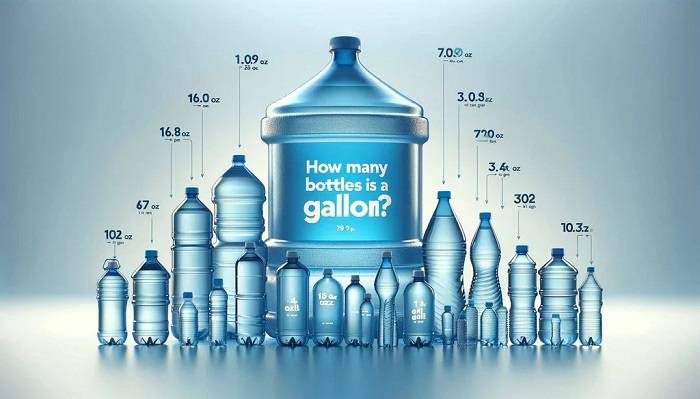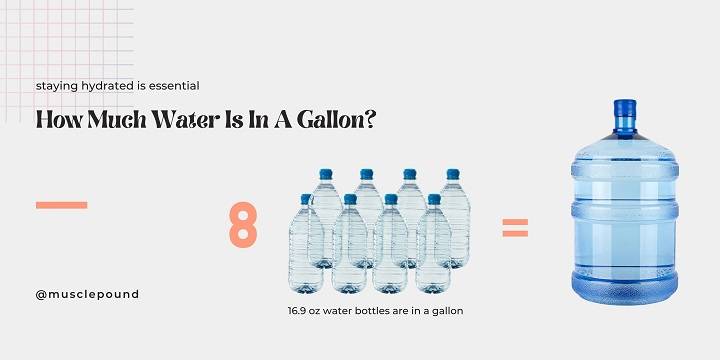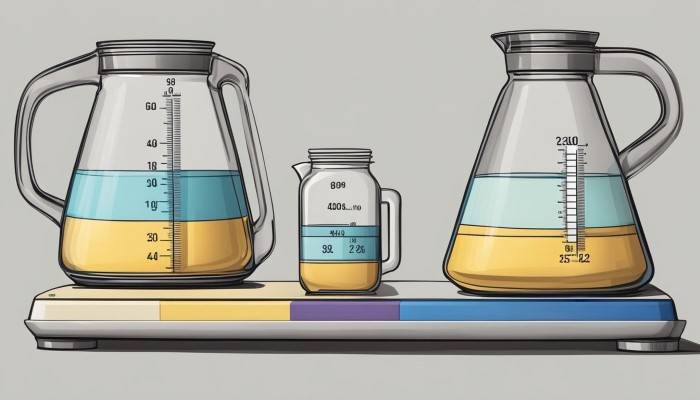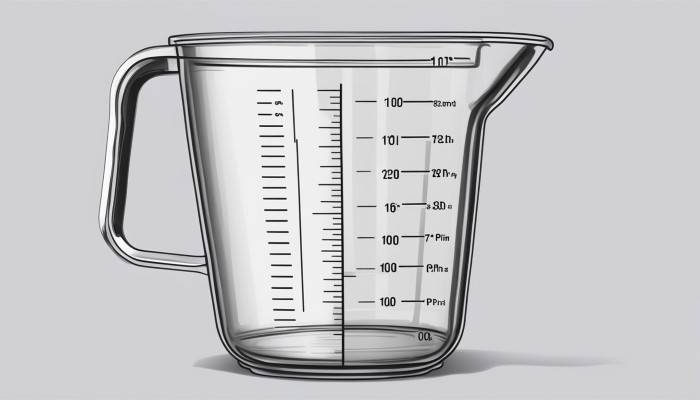Accurate measurements are essential in cooking, baking, science, and many other fields. One common question that arises is, “How many ounces are in a gallon?” This comprehensive guide will delve into the details of this conversion, explore the significance of understanding measurements, and provide practical applications and tips for converting ounces to gallons and vice versa.
Basic Units of Measurement

What is an Ounce?
An ounce is a unit of weight in the Imperial and U.S. customary systems. There are two types of ounces: the fluid ounce (fl oz) and the avoirdupois ounce (oz). For the purpose of measuring liquids, we use fluid ounces.
- Fluid Ounce: Used to measure volume, primarily in the U.S. customary and Imperial systems. One fluid ounce is approximately 29.5735 milliliters.
- Avoirdupois Ounce: Used to measure weight. One avoirdupois ounce is approximately 28.3495 grams.
What is a Gallon?
A gallon is a unit of volume measurement used in both the U.S. customary and the British Imperial systems. However, the size of a gallon varies between these two systems.
- U.S. Gallon: Used primarily in the United States, equal to 128 U.S. fluid ounces or approximately 3.785 liters.
- Imperial Gallon: Used in the United Kingdom and some Commonwealth countries, equal to 160 Imperial fluid ounces or approximately 4.546 liters.
Converting Ounces to Gallons
U.S. Customary System
In the U.S. customary system, the conversion between ounces and gallons is straightforward. There are 128 U.S. fluid ounces in a U.S. gallon. This means:
- 1 U.S. Gallon = 128 U.S. Fluid Ounces
To convert fluid ounces to gallons, you can use the following formula:
Gallons=Fluid Ounces128\text{Gallons} = \frac{\text{Fluid Ounces}}{128}Gallons=128Fluid Ounces
Imperial System
In the Imperial system, the conversion is different due to the larger size of the Imperial gallon. There are 160 Imperial fluid ounces in an Imperial gallon. This means:
- 1 Imperial Gallon = 160 Imperial Fluid Ounces
To convert fluid ounces to Imperial gallons, you can use the following formula:
Imperial Gallons=Imperial Fluid Ounces160\text{Imperial Gallons} = \frac{\text{Imperial Fluid Ounces}}{160}Imperial Gallons=160Imperial Fluid Ounces
Quick Reference Table
| Unit | U.S. Gallons | Imperial Gallons |
| 1 Fluid Ounce | 0.00781 | 0.00625 |
| 16 Fluid Ounces (1 Pint) | 0.125 | 0.1 |
| 32 Fluid Ounces (1 Quart) | 0.25 | 0.2 |
| 64 Fluid Ounces (1/2 Gallon) | 0.5 | 0.4 |
| 128 Fluid Ounces (1 Gallon) | 1 | 0.8 |
Applications of Gallon to Ounce Conversions
Cooking and Baking
Understanding the conversion between gallons and ounces is crucial in cooking and baking, where precise measurements can impact the outcome of a recipe. For example, large batches of soups, sauces, or beverages may require measurements in gallons, while smaller quantities are typically measured in ounces.
Brewing and Distilling
In brewing and distilling, accurate measurement of liquids is essential. Brewers and distillers often work with large quantities of liquids, making it important to understand conversions between gallons and ounces to ensure consistency and quality in their products.
Science and Laboratory Work
In scientific experiments and laboratory work, precise measurements are critical. Converting between different units of volume, such as ounces and gallons, allows scientists to accurately measure and mix solutions, reagents, and other liquids.
Daily Life and Household Use
Understanding how many ounces are in a gallon can be useful in everyday tasks such as measuring fuel, water, or cleaning solutions. It helps ensure the correct proportions and avoid wastage or overuse.
Tips for Accurate Measurements
Using Proper Measuring Tools
To ensure accuracy, use the appropriate measuring tools for liquids and solids. For liquids, use graduated cylinders, measuring cups, or beakers that indicate fluid ounces and gallons. For solids, use scales that measure weight in ounces.
Double-Checking Conversions
Always double-check your conversions, especially when dealing with large quantities or critical applications. Use conversion charts, calculators, or apps to verify your measurements.
Practicing Consistency
Maintain consistency in your measurements by using the same tools and methods each time. This is particularly important in cooking, baking, brewing, and scientific experiments.
Keeping a Conversion Chart Handy
Keep a conversion chart handy in your kitchen, laboratory, or workspace. This will help you quickly reference conversions between ounces, gallons, and other units of measurement.
Historical Context and Evolution of Measurements
Origins of the Gallon and Ounce
The gallon and ounce have historical roots in ancient measurement systems. The term “gallon” originated from the Latin word “galleta,” meaning a liquid measure. The ounce, derived from the Latin word “uncia,” was originally used to measure both weight and volume.
Standardization of Measurements
Over time, measurements were standardized to ensure consistency and accuracy. The British Imperial system and the U.S. customary system evolved to include precise definitions for units like the gallon and ounce, facilitating trade, science, and daily life.
Impact on Trade and Commerce
Standardized measurements have played a significant role in trade and commerce, allowing for fair and consistent transactions. Accurate volume measurements are essential for industries such as agriculture, manufacturing, and retail.
Global Variations in Measurement Systems
Metric System
While the U.S. customary and Imperial systems are commonly used in the United States and the United Kingdom, many countries use the metric system, which includes units like liters and milliliters. Understanding metric conversions is important when using international recipes or conducting scientific experiments.
Adapting Recipes and Experiments
When adapting recipes or experiments from one measurement system to another, precise conversions are crucial. Tools like conversion charts and online calculators can assist in these conversions, ensuring accuracy and consistency.
Cultural Differences
Different cultures have unique measurement traditions and preferences. Understanding these differences can enhance your appreciation of global cuisine and scientific practices, and improve your ability to adapt and apply various measurement systems.
Common Measurement Mistakes and How to Avoid Them
Confusing Fluid Ounces with Weight Ounces
One common mistake is confusing fluid ounces (volume) with weight ounces. Always ensure you are using the correct type of ounce for your measurement needs.
Using Incorrect Tools
Using the wrong measuring tools can lead to inaccurate measurements. Always use liquid measuring cups for liquids and dry measuring cups for solids to ensure accuracy.
Misreading Measurements
Misreading measurements can result in errors. Always read liquid measurements at eye level and ensure the measuring tool is on a flat surface to prevent inaccuracies.
Neglecting Temperature Differences
Temperature can affect the volume of liquids. For precise measurements, especially in scientific experiments, consider the temperature of the liquid and use temperature-corrected measuring tools if necessary.
Fun Facts and Trivia About Gallons and Ounces
Historical Measurements
In ancient times, measurements were often based on everyday objects. For example, a “gallon” might have been literally the size of a large container used by the person measuring.
Evolution of the Measuring Cup
The modern measuring cup, as we know it, was invented in the 19th century and has since become a staple in kitchens worldwide. It has evolved to include markings for various units of measurement.
Unusual Measurement Units
Throughout history, various cultures have used unique units of measurement. For example, the “gill” was a unit used to measure liquids and was equal to a quarter of a pint.
Culinary Superstitions
In some cultures, there are superstitions related to kitchen measurements. For example, it’s believed that adding a pinch of salt to a recipe can ward off bad luck or that using odd numbers of ingredients can bring good fortune.
Conversion Tools and Resources
Online Calculators
Online calculators are a convenient way to convert between different units of measurement. Websites and apps dedicated to measurement conversions can help ensure accuracy and save time.
Conversion Charts
Conversion charts are handy tools that provide quick references for common conversions, such as ounces to gallons, liters to milliliters, and more. Keep a chart in your kitchen, lab, or workspace for easy access.
Educational Resources
Many educational resources, such as textbooks, online courses, and tutorials, offer in-depth explanations and exercises on measurement conversions. These resources can enhance your understanding and proficiency in using different measurement systems.
Related Post:
A Comprehensive Guide to RFK Jr
Dallas Mavericks vs. Los Angeles Clippers
Understanding how many ounces are in a gallon is just one aspect of mastering measurement conversions. Accurate measurements are the foundation of successful cooking, baking, scientific experiments, and daily tasks. By familiarizing yourself with common measurement units, conversions, and practical tips, you can enhance your skills and achieve consistent results.
Whether you’re scaling recipes, measuring liquids for scientific experiments, or adapting international instructions, the knowledge of measurement conversions will serve you well. Embrace the precision and versatility that come with understanding measurements, and enjoy the benefits of accurate and reliable results in all your endeavors.




